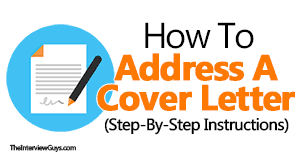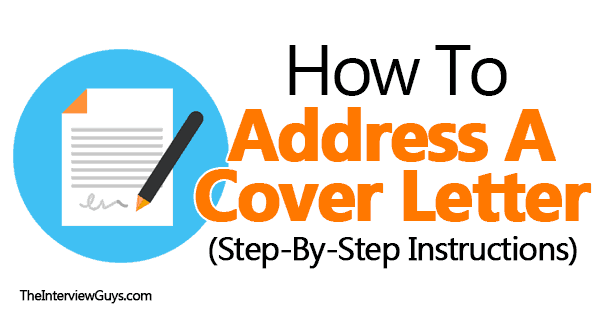 By Mike Simpson
By Mike Simpson
Everything is set.
You have the skills, you’ve found the job and you are ready to apply. The only thing standing in your way is an ominously blank word document. The text cursor blinks relentlessly, mocking you.
You, however, are not one to be taken down by the annoying persistence of blinking mechanical devices. You take a deep break, stretch, and complete a brief, but effective, chair-based war dance.
You begin to write.
The first words you write will be the very first words a potential employer will read.
They are your introduction, a blast of information that will set the tone for your entire cover letter. They are important. Luckily, they are easily conquered.
What Is A Cover Letter?
Ok, so you know what a cover letter is.
(If you don’t, you might need a more in-depth look at what a cover letter is, so check out our article “How To Write a Cover Letter”)
But what else is a cover letter?
A cover letter is your friend.
This is your chance to get a potential employer’s attention, beyond the facts and details of your resume. It is an opportunity to show hiring managers that you did more than send fifty identical resumes out without carefully researching the organizations you are soliciting.
The best letters match the tone and culture of an organization. This starts with your very first few words – how you address the reader.
So having said all of that, you need to learn how to address a cover letter properly!
Addressing a Cover Letter: Why is it Important?

It is tempting to discount the importance of how you address your cover letters. Do so at your own peril!
The wrong choice can land your application squarely in the recycle bin.
Most employers receive more than 25 resumes for each position posted, while some receive hundreds. They are looking for that perfect fit, but they are also overwhelmed by choices.
Even seemingly small mistakes may see your submission culled from the flock.
They can, after all, only fully examine so many options over the course of a busy afternoon. Unless you’re applying to a large company with an independent human resources department, your reviewer has better things to do.
You need to get their attention, positively, from the very beginning.
Who To Address a Cover Letter To
Imagine you receive two cover letters.
- Both applicants are qualified.
- Both letters are well-written.
In fact, the only difference seems to be in their greeting. One person took the time to figure out where this letter was going and has addressed you by name. The other included a general greeting.
Who are you more likely to interview? Most hiring managers will, unsurprisingly, choose the candidate who included a personal greeting.
You want to be that candidate!
How To Address a Cover Letter Without a Contact Person
When you cannot address your cover letter to a specific person, the next best thing is a professional, generic greeting. Which one? A 2011 study conducted by Saddleback University provides some insight:
- “Dear Hiring Manager” Preferred by 40.5% of employers surveyed
- “To whom it may concern” Preferred by 27.4% of employers surveyed
- “Dear Sir/Madam” Preferred by 17.9 % of employers surveyed

Data Source: Saddleback University
Mistakes To Avoid When Addressing a Cover Letter
- Grammar and punctuation are the biggest mistakes made when drafting a cover letter.
- Be sure to use a colon in your greeting.
- Also, avoid being too familiar! Though this may be appropriate, depending upon a company’s culture, it is more likely to come off as inappropriate. “Hi Bill” is seldom a good cover letter greeting.
Step By Step Instructions For Addressing a Cover Letter
STEP 1) Carefully read the job advertisement for mention of to whom you should address your cover letter. If the name of the hiring manager is listed, not using his or her name would show a lack of attention to detail and immediately earn you negative points.
STEP 2) If the name of the hiring committee is listed, but their gender is absent, visit the company’s website in search of a photograph or pronoun that will reveal the hiring manager’s gender. If in doubt, is is best to avoid gender pronouns altogether by using the person’s full name to address your cover letter.
STEP 3) Be sure to use the correct title. If you are applying to health care, academia or military fields this is especially important. Addressing a doctor or a colonel as “Mr.” is going to cost you.
STEP 4) If there is no name listed on the job advertisement, take to the internet for an answer. Visit the company website to see if you can decipher the most likely hiring manager for the position. If a personal email address was given, you should be able to match this email to its owner. If a general email was given, you may still be able to figure out who will read your letter.
STEP 5) When all else fails, consider a phone call to the main office. Skip this if the job advertisement specifically lists no calls. Otherwise, this is an extra step that is likely to get you noticed.
STEP 6) If you cannot address your cover letter to an actual person at the agency to which you are applying, then you will need to use a generic greeting.
STEP 7) Though there is some disagreement over cover letter greeting punctuation, the safest and most professional option is to use a colon. “Dear Hiring Manager:” is a good choice.
Putting it All Together
Armed with this new knowledge, you realize why the blinking text cursor has been mocking you: you weren’t quite ready to write those first few words.
Creating a compelling cover letter is about more than stream-of-consciousness prose flowing effortlessly from your fingers, through the keyboard, and into a word document. It requires knowledge, research and effort.
Now that you have the first requirement covered, there is probably an employer website you should be visiting. Good luck!

Co-Founder and CEO of TheInterviewGuys.com. Mike is a job interview and career expert and the head writer at TheInterviewGuys.com.
His advice and insights have been shared and featured by publications such as Forbes, Entrepreneur, CNBC and more as well as educational institutions such as the University of Michigan, Penn State, Northeastern and others.
Learn more about The Interview Guys on our About Us page.

